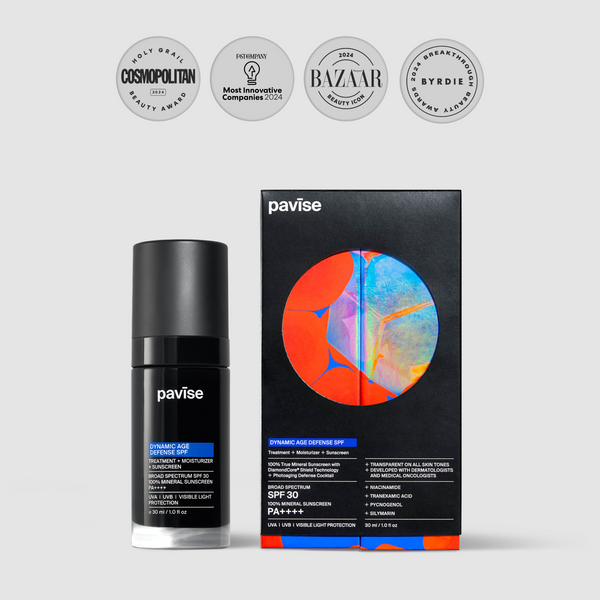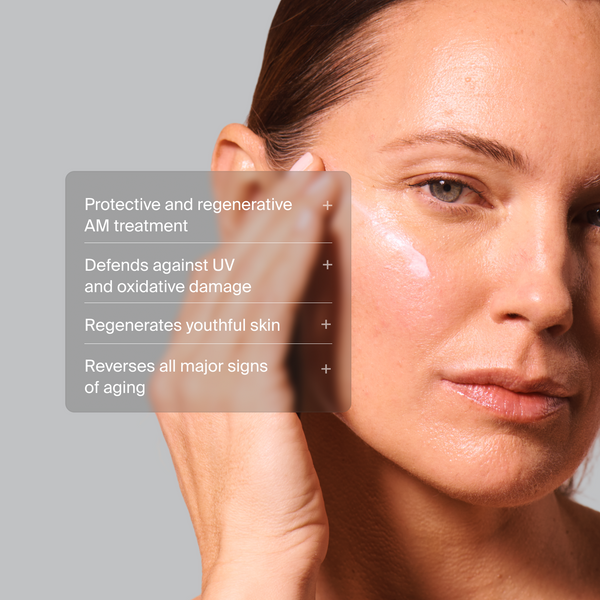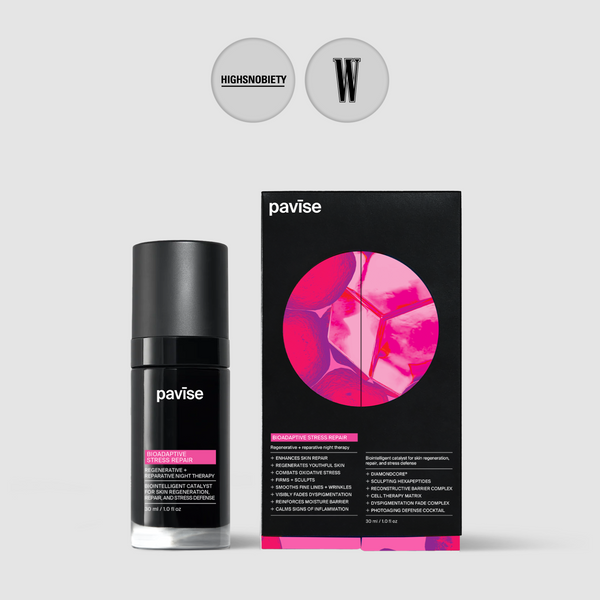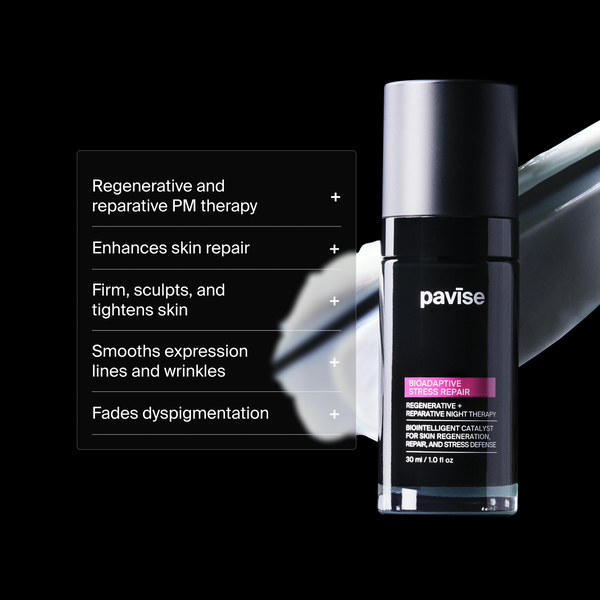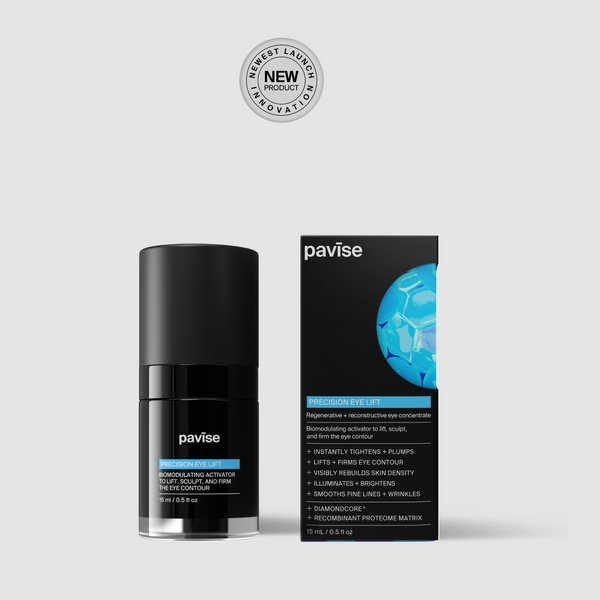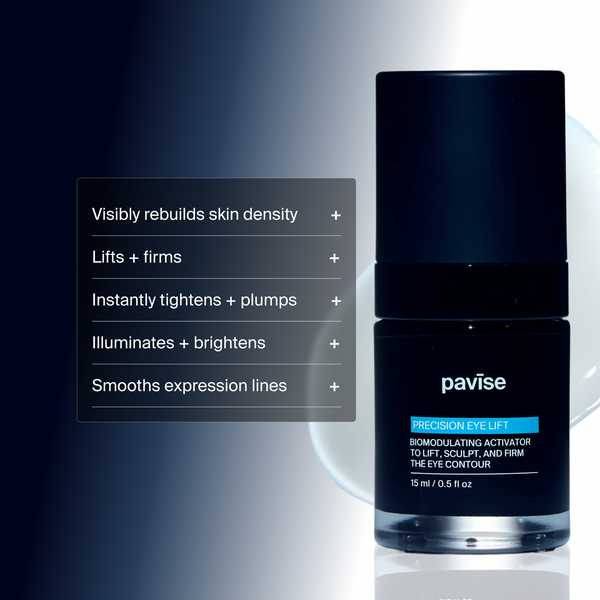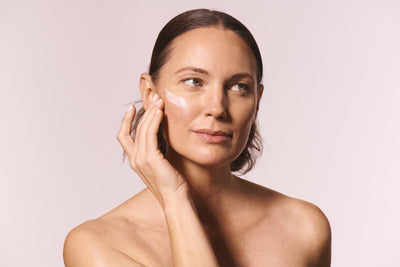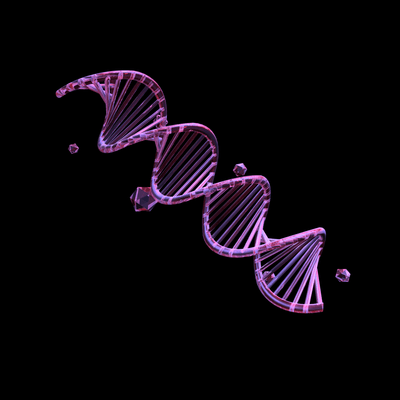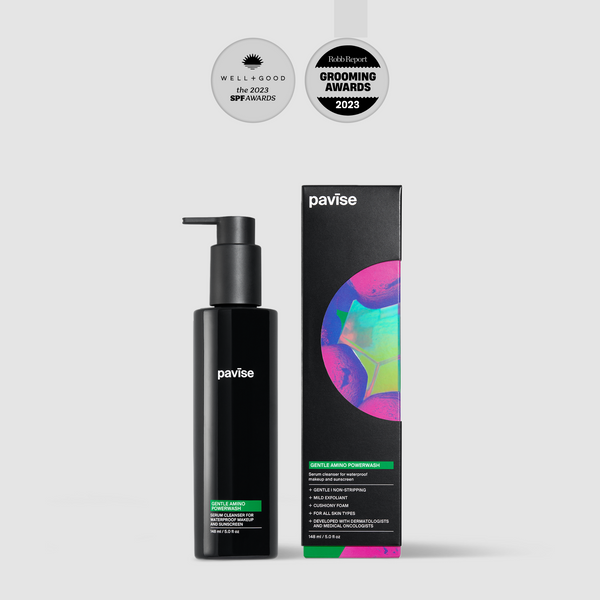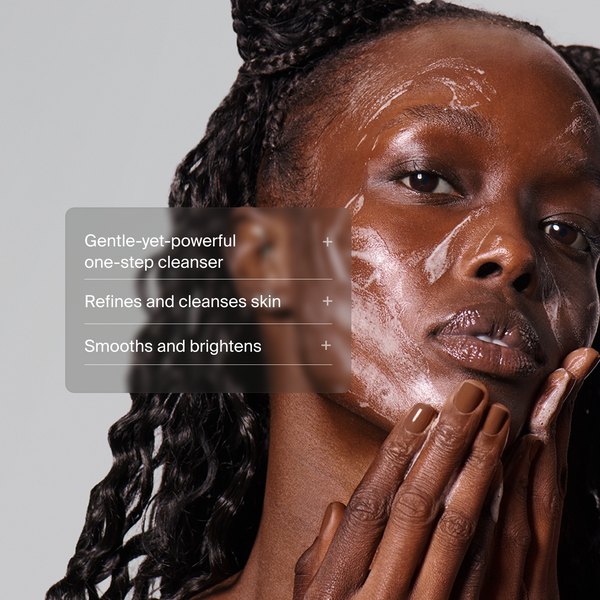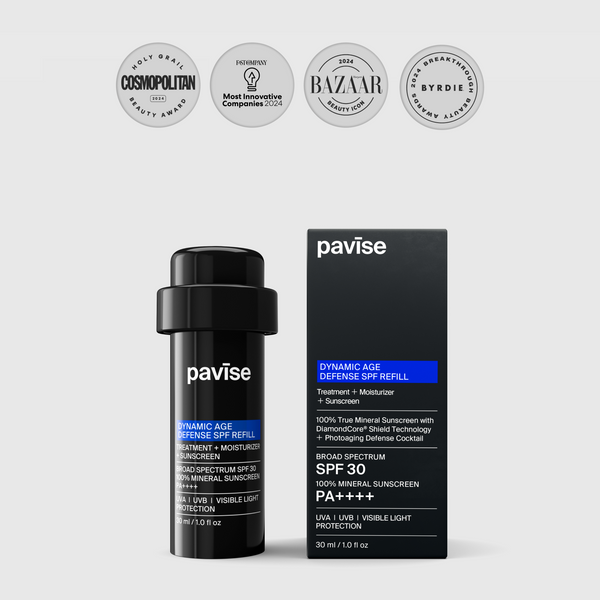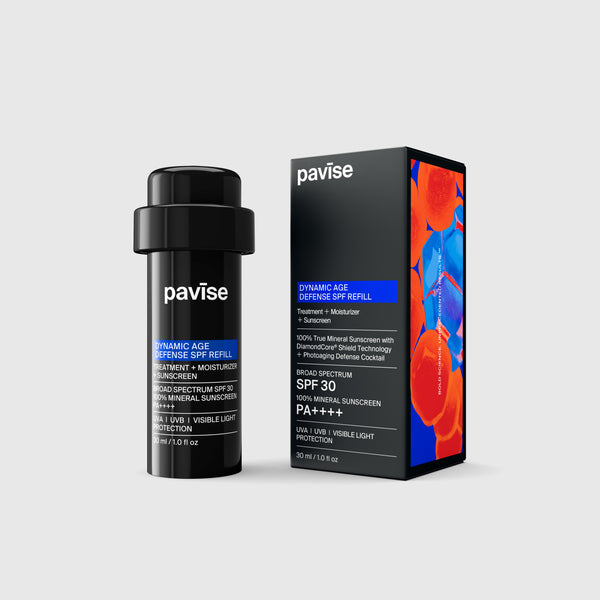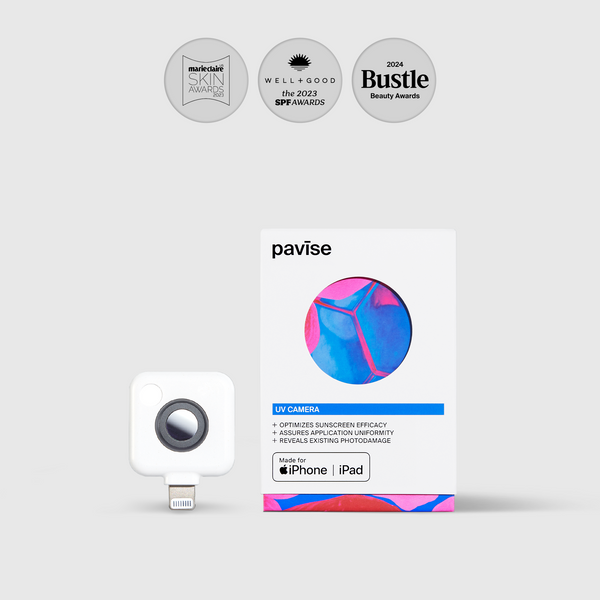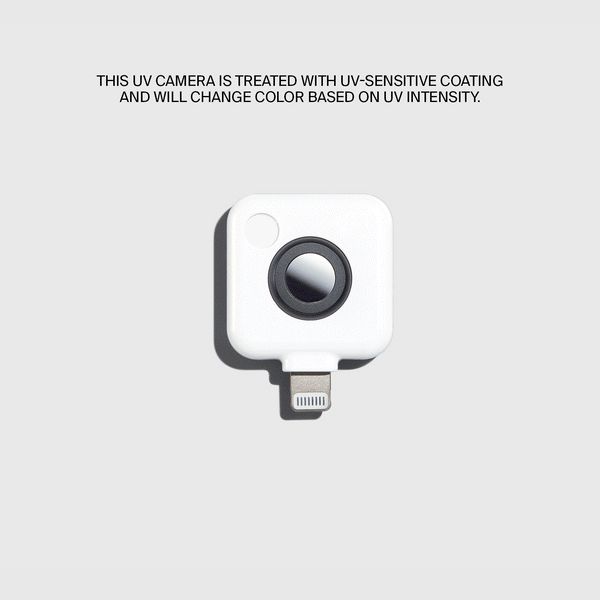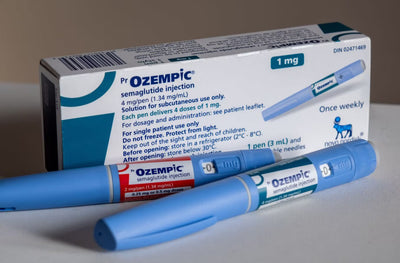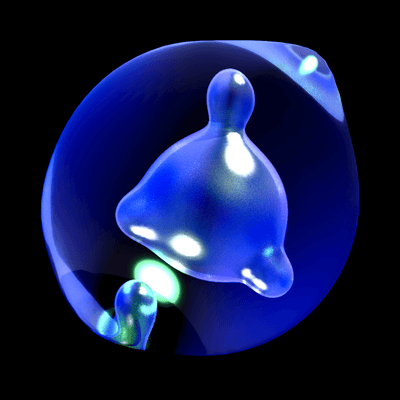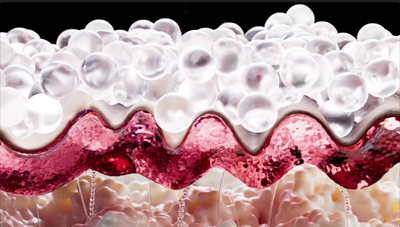THE SILENT INFLAMMATION ACCELERATING AGING

What you need to know
Inflammaging, a chronic form of low-level inflammation that worsens with age, accelerates visible skin aging and contributes to broader systemic decline. Key drivers include immune system deterioration, skin barrier disruption, oxidative stress, and cellular senescence, all of which trigger persistent inflammatory responses in the skin.
Targeted skincare strategies, such as Pavise Bioadaptive Stress Repair, help counteract these effects by rebuilding the skin barrier, promoting collagen synthesis, and reducing oxidative damage to support healthier, more resilient skin.
With age, the body undergoes subtle but persistent changes that can trigger a state of ongoing, low-level inflammation, one that doesn’t cause obvious symptoms at first but steadily contributes to cellular stress and tissue breakdown over time. In the skin, this manifests as dryness, sensitivity, slower healing, and visible signs of aging like fine lines and loss of elasticity. This chronic inflammatory environment known as inflammaging not only accelerates skin aging but also plays a role in broader systemic decline. In the sections that follow, we’ll explore the biological mechanisms behind this phenomenon, the key drivers that make it worse, and emerging strategies to counteract its effects through advanced, science-backed skincare.
What is inflammaging?
Inflammaging is formally defined as chronic, low-level systemic inflammation1,2. The key word in this definition is “chronic.” On its own, inflammation is not damaging. It is actually the first step in the body’s healing process, acting as the signal for the natural defense systems to kick in to remain healthy. The issue arises when there is constant inflammation. Persistent inflammation can be damaging to the skin and body, causing an increased susceptibility to age related diseases as well as an increased aged appearance in the skin3. There are many possible causes of inflammaging such as a weakened immune system, chronic stress, and skin barrier disruption, but with those also comes many solutions.
What causes inflammaging?
A major cause of inflammaging is skin barrier disruption and cellular senescence due to intrinsic aging1,3,4. Skin barrier disruption can be caused by both intrinsic and extrinsic aging as the dermis and epidermis become more impaired. The outer layer of the skin, the epidermis, experiences a decrease in hydration as well as atrophy and reduced wound healing3. This results in dry, fragile skin. Additionally, the dermis becomes thinner as the extracellular matrix (ECM) components such as collagen begin to fragment and diminish in number which causes wrinkles and a lack of elasticity3. As these skin barriers become weaker and lose functionality, the skin cells release proteins called cytokines that are pro-inflammatory1. In other words, these proteins cause inflammation because the skin cells are experiencing damage that they want to heal, but this damage is not something as simple as a cut along the skin barrier.
Another theory behind the cause of intrinsic aging is something called cellular senescence. Senescent cells are cells that experience irreversible cell cycle arrest3. Our cells actually do have a life span because they cannot replicate forever. They experience a stage in which they do not die, but they stop proliferating and their functionality changes. A major sign that a cell has become senescent is it begins secreting different proteins. This is known as the senescence-associated secretory phenotype (SASP)4. One of the altered proteins that experience an uptake in production is the pro-inflammatory cytokine4. This is just another pathway that causes inflammation due to age, but it is the same idea as before. Our cells are experiencing a change that results in the production of more inflammation, but there is nothing to resolve it. This leaves our body in a state of constant inflammation which can be harmful in the long run.
Finally, there is the generation of reactive oxygen species (ROS). At low concentrations, ROS are not considered damaging and are actually highly involved in signaling pathways in the body. When the concentration increases, they become damaging because they oxidize proteins and damage DNA which results in cellular dysfunction and accelerated aging7. One of the major generation sites of ROS is during the defensive inflammatory response. This means that inflammation responses can generate additional ROS which leads to damaging oxidative stress. These ROS can then go on to actually induce even more inflammation through cellular dysfunction7. All of this leads to a damaging cycle of constant inflammation because ROS is continuously generated and there are not enough natural antioxidants present to scavenge the damaging free radicals7.
How can inflammaging be treated?
Luckily, all of these causes of inflammation can be treated. A good approach to reducing inflammation caused by aging is to heal the skin barrier by promoting collagen synthesis and reducing reactive oxygen species (ROS) that cause additional damage. The best way to achieve these types of treatments is by using topical antiaging treatments5. Our preferred treatment is Pavise Bioadaptive Stress Repair and Dynamic Age Defense which contain ingredients that combat all of these symptoms to reduce inflammation.

Inflammation after using BSR
The two main ingredients that combat inflammation are the Reconstructive Barrier Complex in the Bioadaptive Stress Repair and DiamondCore® in both products. The Reconstructive Barrier Complex mimics and rebuilds that skin’s natural barrier which is one of the main causes of cytokine production. When the skin barrier is replenished, skin cells no longer secrete inflammatory cytokines. DiamondCore® technology is the ingredient responsible for promoting collagen synthesis and scavenging the free radicals that induce oxidative stress. This technology has been proven to enhance collagen synthesis by almost 20% which increases dermal thickness and reduces the stress being put on the skin cells6. DiamondCore® has also been proven to be an effective free radial scavenger due to its structural uniformity6. By healing the skin barrier and reducing the levels of free radicals, skin cells no longer secrete the cytokines that are responsible for inflammation. When inflammation is decreased in the skin, it then reduces inflammaging overall in the entire body.

Inflammation after using BSR
Inflammaging is a complex but treatable condition rooted in chronic, low-grade inflammation that accelerates skin aging and increases vulnerability to age-related diseases. While intrinsic factors like immune decline and cellular senescence play a significant role, external stressors and skin barrier damage further compound the problem. Fortunately, targeted skincare interventions can help restore skin function and reduce inflammation at the source. By addressing both the causes and effects of inflammaging, treatments like Pavise Bioadaptive Stress Repair and Dynamic Age Defense offer a proactive approach to preserving skin health and slowing the aging process from the outside in.
References
1. Agrawal R, Hu A, Bollag WB. The Skin and Inflamm-Aging. Biology. 2023;12(11):1396-1396. doi:https://doi.org/10.3390/biology12111396
2. Rahman I, Bagchi D. Inflammation, Advancing Age and Nutrition : Research and Clinical Interventions. Academic Press; 2013.
3. Sanada F, Taniyama Y, Muratsu J, et al. Source of Chronic Inflammation in Aging. Frontiers in Cardiovascular Medicine. 2018;5. doi:https://doi.org/10.3389/fcvm.2018.00012
4. Lee YI, Choi S, Roh WS, Lee JH, Kim TG. Cellular Senescence and Inflammaging in the Skin Microenvironment. International Journal of Molecular Sciences. 2021;22(8):3849. doi:https://doi.org/10.3390/ijms22083849
5. Pająk J, Nowicka D, Szepietowski JC. Inflammaging and Immunosenescence as Part of Skin Aging—A Narrative Review. International Journal of Molecular Sciences. 2023;24(9):7784. doi:https://doi.org/10.3390/ijms24097784
6. Zhang XD, Teng C, Bai X, et al. Enhanced skin regeneration and therapeutic delivery using novel diamond‐augmented zinc oxide. Journal of Cosmetic Dermatology. Published online July 31, 2024. doi:https://doi.org/10.1111/jocd.16508
By Elia Rodriguez - Updated September 24, 2025
